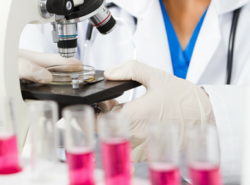
Innovative nano-balloons to capture breast cancer cells in the blood for early detection of malignant disease
Published: 05/8/22 7:01 AM

Kang Liang
Project Description: Advances in screening methods have increased the number of women who are diagnosed with early-stage breast cancer. However, these imaging methods are unable to detect the very early stages of the spread of cancer from its initial site or provide information for effective treatment options. Early indication that cancer cells have begun to spread can be their presence at very small concentrations in the blood. This project aims to develop new technology to capture these circulating cancer cells to study and gain information to monitor and optimise treatment options.
Why This Work is Needed: Patients with metastatic breast cancer have very poor outcomes with a 5-year survival rate of only 32%. Early detection of breast cancer and the selection of an effective treatment is the key to improve the quality of life and survival of patients.
Expected Outcomes: Outcomes from this project will yield new technology to enhance the retrieval of circulating cancer cells for analysis. This will lead to a simple blood test that will improve the diagnosis of early-stage breast cancer, provide critical information for more effective therapies, and be used to monitor patients for long term recurrence.
Project Details
All breast cancers, whether they are pre-invasive or invasive, have the potential to metastasise elsewhere in the body. The extent to which a breast cancer has spread is key to determining the course of the cancer and treatment required.
One way in which clinicians can determine whether a cancer has become invasive is by looking for cancer cells within the bloodstream. These circulating tumour cells, or CTCs, can be easily detected in a blood test in later-stage invasive disease. However, in early pre-malignant cancer there are not enough CTCs in the blood to be detected using current techniques.
This project, led by Dr Kang Liang from the University of New South Wales, will use a new technology known as “nano-balloons” to improve this process. As their name suggests, nano-balloons are microscopic devices which can be inflated and deflated. Dr Liang’s preliminary data shows that using these devices, he can capture more CTCs within a blood sample than the current process. This will make the test more sensitive for detection of early malignant changes.
